The spring cankerworm (Paleacrita vernata) and the fall cankerworm (Alsophila pometaria) are native pests to the deciduous forest, shade, and ornamental trees of North America. Periodic outbreaks of these pests cause serious defoliation. The habits of these two pests are nearly identical, being named "spring" and "fall" cankerworms because of the season during which each lays its eggs. The larvae of each species are known variously as loopers, geometers, inchworms, or spanworms.
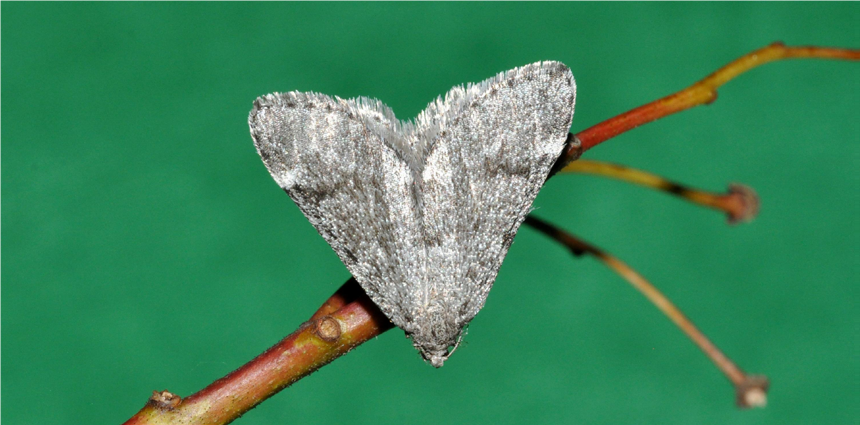

Ciesla, Forest Health Management International, Bugwood.org.
Description and Life Cycle
Cankerworm moths are brownish-gray. Females are wingless, while males bear wings. Because females are wingless, they are forced to crawl upward into trees to deposit their eggs either in patches or compact masses (fall cankerworm) or loose clusters (spring cankerworm). Eggs begin to hatch toward the end of May. There is only one generation per year.

The larvae (caterpillars) of both species occur together and have similar eating habits. They destroy the young leaves and buds of numerous species of deciduous trees, but prefer elm and apple trees. Trees may become totally defoliated, which may result in the trees' death. Death is more likely if the trees have been defoliated more than once or are not vigorous. Toward the end of the larvae's feeding period (late-May, early-June), the affected trees begin to take on a lacy appearance. Cankerworm larvae feed for about 3 to 4 weeks and then crawl down the trunk or drop by silk threads to the ground where they enter the soil to a depth of 1-4". In the soil, they transform into the pupal stage. Pupae remain in the soil until fall. Fall cankerworm moths begin to emerge from the soil soon after the first frost. The spring cankerworm remains in the pupal stage during winter and emerge as moths a few days after the snow has melted in spring.
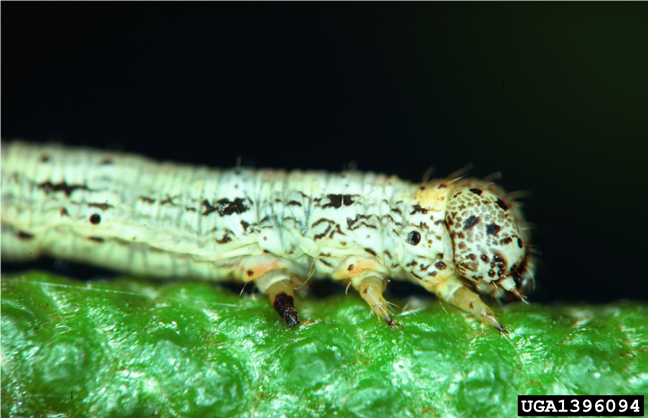
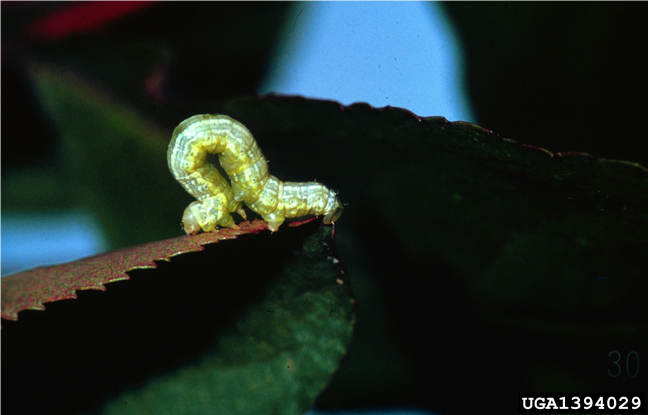
Area, Bugwood.org (top) and James B. Hanson, USDA Forest Service,
Bugwood.org (bottom).
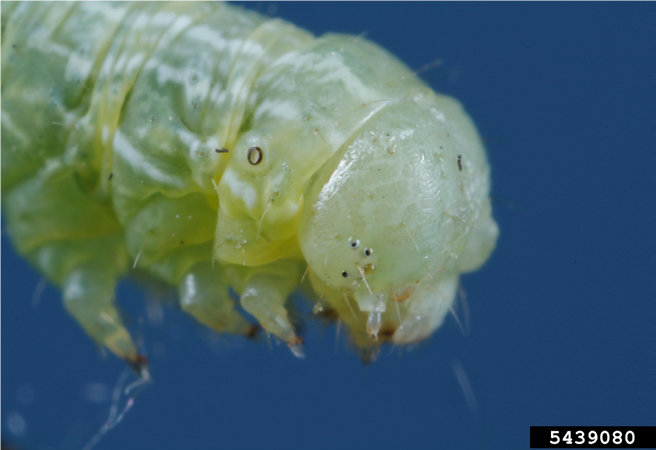
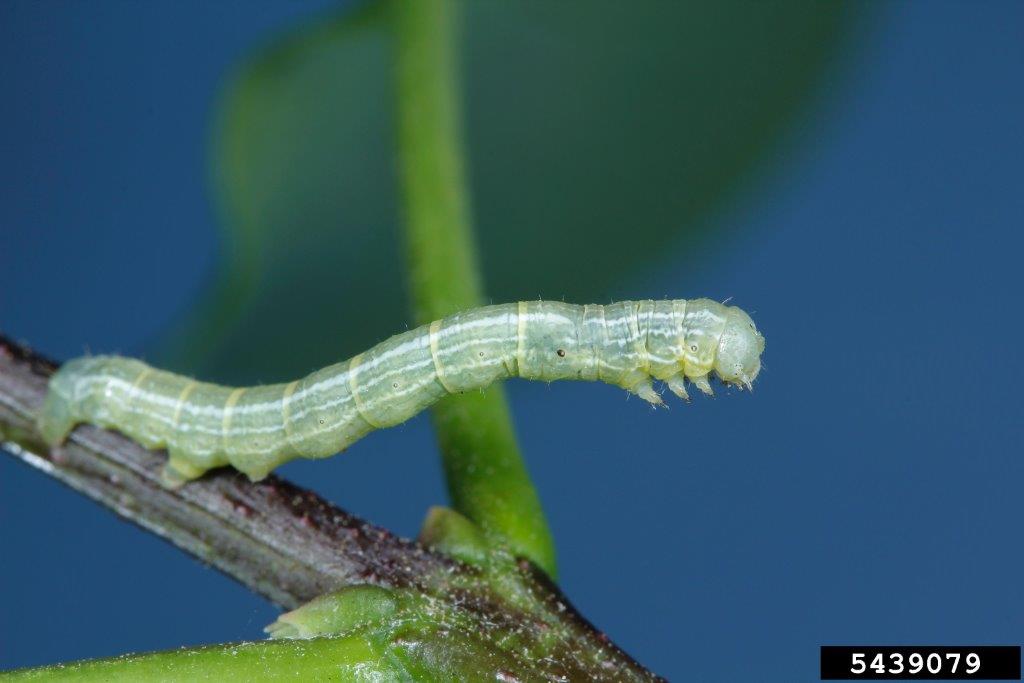
Management
IPM Strategies:
- Cultural Practices - Both species of cankerworm females must climb up tree trunks to lay their eggs. They crawl to the crown of the trees and lay eggs on small branches. Barriers similar to those used on trees for the gypsy moth can be made by placing a sticky band 5-6" wide around tree trunks. If the bark is heavily fissured or has deep grooves through which the females can crawl, inexpensive cotton batting can be placed under the band. The sticky material should be placed on the band and not on the bark. Many of these sticky materials can cause girdling if placed directly on bark.
- Biological Control - Bacillus thuringiensis (B.t.) should be used when possible. B.t. must be applied while the cankerworms are still small (less than 1/2") to achieve good management.
Consult your county Agricultural Field Specialist for additional pesticide recommendations.

Ogden, Bugwood.org.

Stop! Read the label on every pesticide container each time before using the material. Pesticides must be applied only as directed on the label to be in compliance with the law. All pesticides listed in this publication are contingent upon continued registration. Contact the Division of Pesticide Control at (603) 271-3550 to check registration status. Dispose of empty containers safely, according to New Hampshire regulations.
Download the resource for the complete factsheet.
